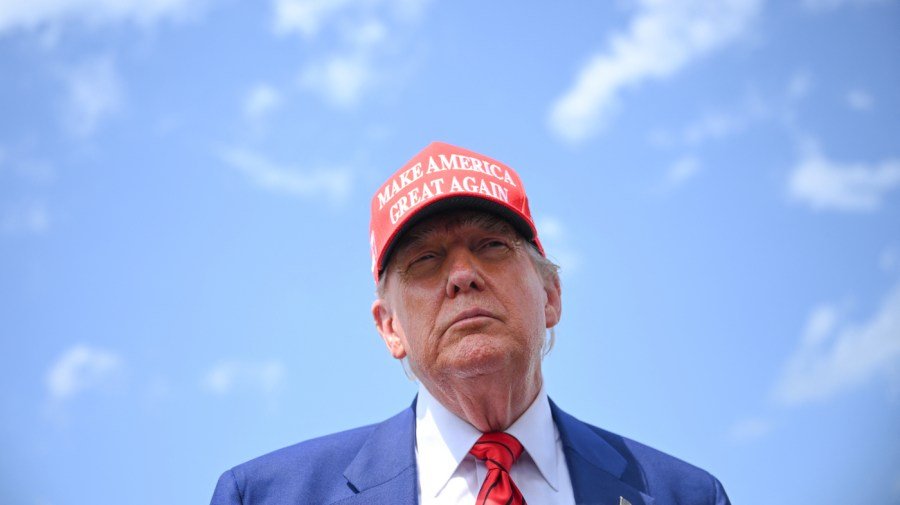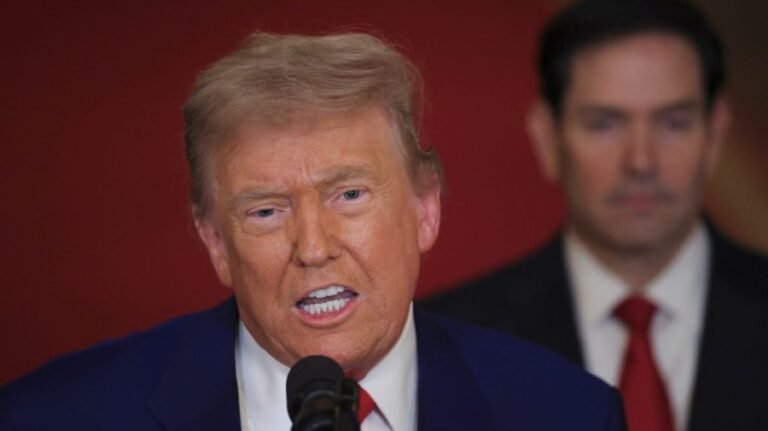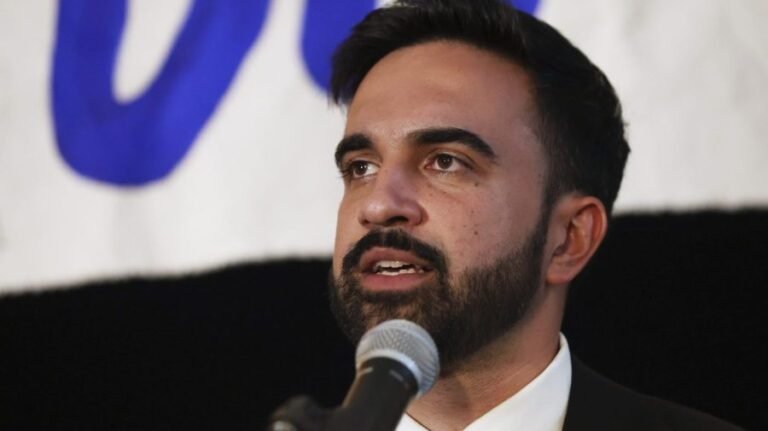
The Senate version of President Trump’s domestic policy bill will likely fall short of its ambitious promises for economic growth and fiscal responsibility, economists are warning.
While the Senate version will have some substantial differences from the version passed in the House in May, the overall structure of the bill remains in place, with the big pieces of the 2017 Trump tax cuts featuring as the centerpiece.
Republicans say the measures will boost growth, create jobs and won’t balloon the deficit.
The White House released a report Wednesday claiming the bill would boost economic growth by nearly 5 percent and create roughly 7 million jobs over the next four years — far higher than any independent analysis of the bill has found.
Trump’s “One Big Beautiful Bill is projected to deliver major economic gains in the first four years,” Treasury Secretary Scott Bessent said in a Wednesday social media post.
Economists, investors and tax experts are telling a different story about the bill, tempering their expectations for growth and pointing to the bill’s redistributive effects and its deficit expansion, much of which is being swept under the rug using some creative accounting.
“From a macroeconomic perspective, it probably has little effect,” Reuven Avi-Yonah, a professor of tax law at the University of Michigan, told The Hill. “I’m always a bit skeptical of the growth potential resulting from tax cuts. And it increases the deficit significantly in a higher interest rate environment, and that’s not ideal.”
Growth projections are small
Official growth projections for the bill are modest. The Joint Committee on Taxation (JCT), Congress’s official tax scorer, predicted the House version of the bill would increase the average annual growth rate of real gross domestic product (GDP) by 0.03 percentage points, from 1.83 to 1.86 percent, through 2034.
This is less than growth resulting from the tax cuts when they were first passed in 2017 and measured in 2018. The Congressional Budget Office (CBO), Congress’s official legislative scorer, separated out the effects of the tax cuts in 2018 and found them to produce an increase in potential GDP of 0.2 percent, according to the Congressional Research Service (CRS).
GDP growth popped in the second quarter of 2018 above 4 percent, which may have been due to demand-side stimulus of the tax cuts.
“The growth effects tend to show a relatively small (if any) first-year effect on the economy,” the CRS concluded in 2018.
The current bill includes additional tax cuts geared toward working Americans. As pledged by Trump, the House version canceled taxes on tips and overtime through 2028, though the Senate version institutes caps for those deductions.
Tax experts say these provisions will have little to no effect on growth.
“With tax-free tips, all you’re doing is encouraging people to earn their income through tips and not wages. You’re not creating any new economic activity,” Howard Gleckman, a senior fellow at the Urban-Brookings Tax Policy Center, told The Hill.
Deficit effects
The House version of the bill would add $2.4 trillion to the deficit over 10 years, according to the CBO. The JCT estimated the Senate’s version of the bill would add $440 billion to the deficit.
However, that estimate works from the “current policy baseline,” whereby revenue effects from the extension of the 2017 cuts, which have been in place since 2018, are ignored in the accounting.
In other words, Senate Republicans have calculated the total cost of their bill without including the key provisions that would expire without it.
With the cost of those tax cut extensions factored in, the true cost of the legislation is between $4 trillion and $5 trillion over 10 years. That’s close to 14 percent of the total U.S. debt stock of $36 trillion.
“On a current law basis, we estimate the Senate-proposed tax cuts would increase deficits by $4.2 trillion — nearly $500 billion above the House’s equivalent proposals. That figure would rise to $4.8 trillion if temporary tax cuts in the bill were ultimately made permanent,” the nonpartisan Committee for a Responsible Federal Budget found in an analysis.
The massive deficit expansion of the bill, which will be subject to increased debt service costs from elevated interest rates, has heads spinning in the financial world.
Credit ratings agencies have downgraded U.S. debt levels from their triple-A rating status to the double-A range. Moody’s was the last major agency to do so in May. Fitch’s downgrade came in 2023 after a congressional standoff over the U.S. debt ceiling and cited an “erosion of governance.”
Investment projections point in different directions
Different models from the JCT show different effects on capital and investment coming from the House bill.
One model delivers an average increase in the U.S. capital stock of 0.3 percent over the 10-year budget window, while another shows a decrease in the capital stock of 0.9 percent that reduces overall economic output.
Capital growth improved from 2017 to 2018 but was well within historical ranges, and it’s hard to say if it was directly related to the tax cuts. This was true for nonresidential investment, plants, equipment and patents.
CRS said in 2019 that they couldn’t conclude “that the higher rate of growth of nonresidential fixed investment was due to the tax changes.”
One 2024 study out of UCLA, the Federal Reserve and the JCT found that investment improved slightly in 2018 and then jumped way up in 2019 as a result of the 2017 tax cuts. While the net investment rate declined for pass-through S-corporations, it improved markedly for C-corporations.
“Tax cuts cause increases in sales, profits, investment, employment, and payrolls, with earnings gains concentrated among highly paid workers and executives,” the researchers found.
Many of the business tax breaks in the bill — which include permanent R&D credits, bonus depreciation and interest deductibility — have varying degrees of efficacy.
Different studies of the R&D credit, for example, have shown that one dollar of the credit stimulated, on average, one dollar of additional intended investment.
“There is widespread agreement that the [R&D] credit could be more effective than it is,” public finance analyst Gary Guenther wrote for the CRS in 2022.
Tax experts also think that bonus depreciation is good for capital investment.
“Bonus depreciation may affect investment,” Bradley Borden, a real estate tax specialist at Brooklyn Law School, told The Hill. “As the activity picked up across 2020 and 2021, people were purchasing property and taking bonus depreciation deductions.”
Effects on jobs and wages
All of the JCT’s models of the House bill show the labor supply increasing as a result of legislation, which is the main driver of the bill’s modest projected GDP contribution.
The CBO agrees, seeing the bill’s lower marginal effective tax rates as increasing the incentive to work.
The law would boost the labor supply by 0.6 percent and peak at 0.9 percent in 2026 —equivalent to increasing the number of employed people by 1.5 million, according to the CBO.
However, numerous analyses suggest that this won’t necessarily mean that workers will get paid more, as most of the wage gains from the 2017 bill accrued at the top of the income spectrum.
Nominal wage growth was 3.2 percent between 2017 and 2018, but real wage growth, as deflated by GDP, was 1.2 percent, marking a smaller rise than overall compensation growth.
This “indicates that ordinary workers had very little growth in wage rates,” according to CRS.
“Distributional analyses of the tax change suggested that the tax revision favored higher-income taxpayers, in part because most of the tax cut benefited corporations and in part because the individual income tax cut largely went to higher-income individuals,” the agency found in 2019, summarizing previous forecasts.
These were confirmed by measurements of the bill’s effects.
“Average earnings for workers at the 95th percentile increased by approximately $2,000 per year, while gains for workers below the 90th percentile are statistically indistinguishable from zero,” the study by UCLA’s Patrick Kennedy and others concluded.
Distributional effects
Just as wage and salary gains from the bill are likely to amass at the top, according to projections, the bill is also expected to redistribute wealth and resources toward the upper echelons of the income spectrum.
While the bill doesn’t expressly increase taxes on the poor, it does shift wealth away from them, with the lowest tenth of earners losing resources and the top tenth gaining them.
Gains from the bill are increasingly skewed toward the rich, according to the CBO. The highest tenth of earners will get an additional $12,000 per year, while the second-highest tenth will get about $3,200, the third tenth will get about $2,100, and the fourth tenth will get about $1,500.
The trend continues down the line. The seventh-highest tenth won’t see much of a change in their annual wealth, while the bottom three deciles will be worse off.


